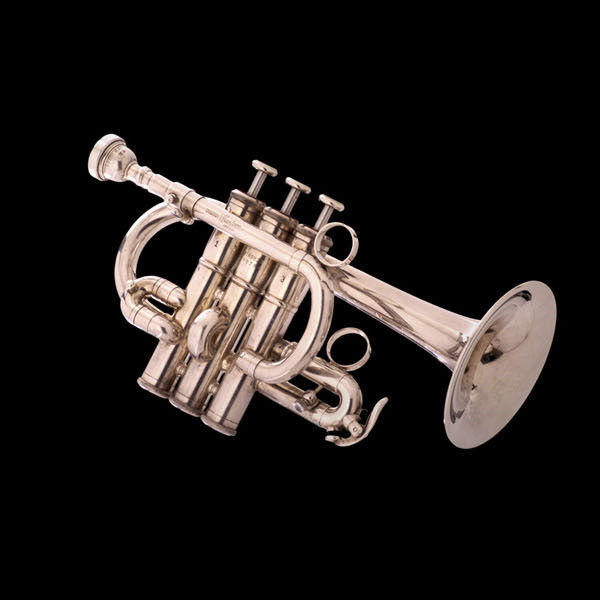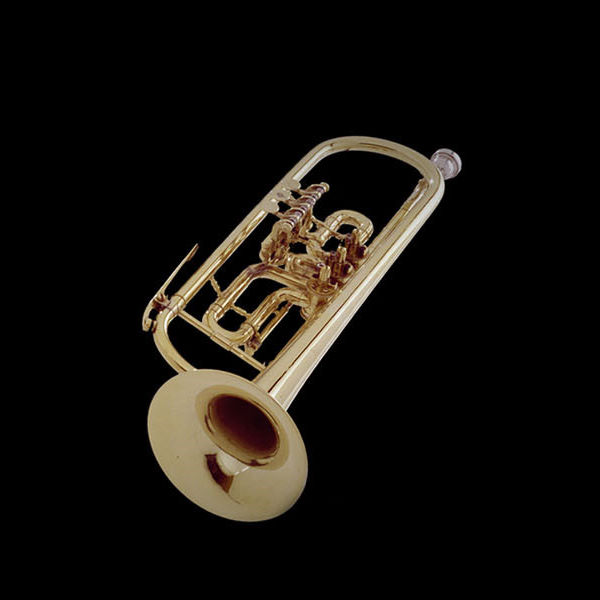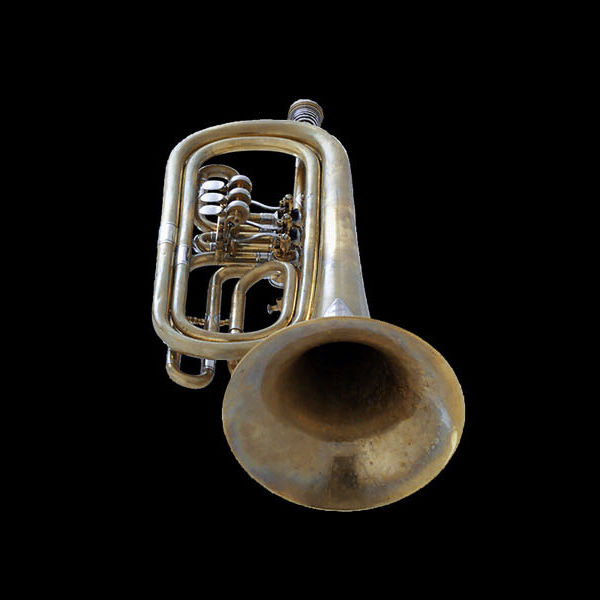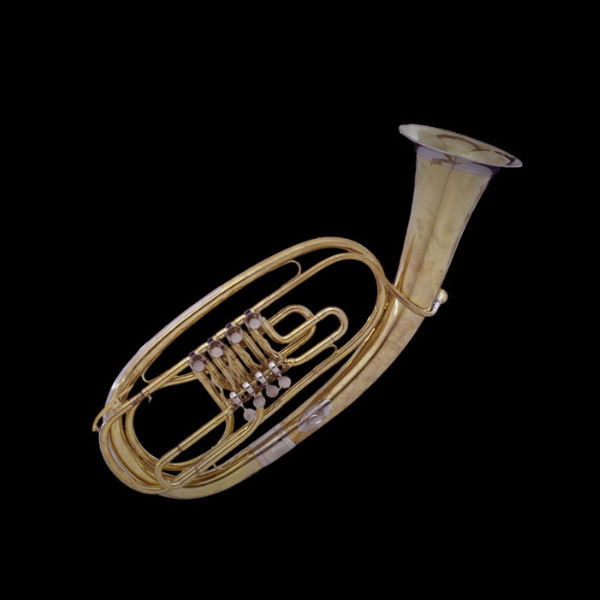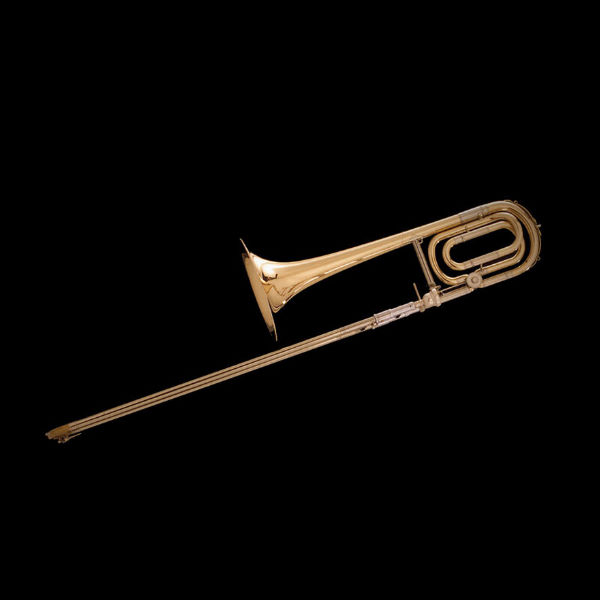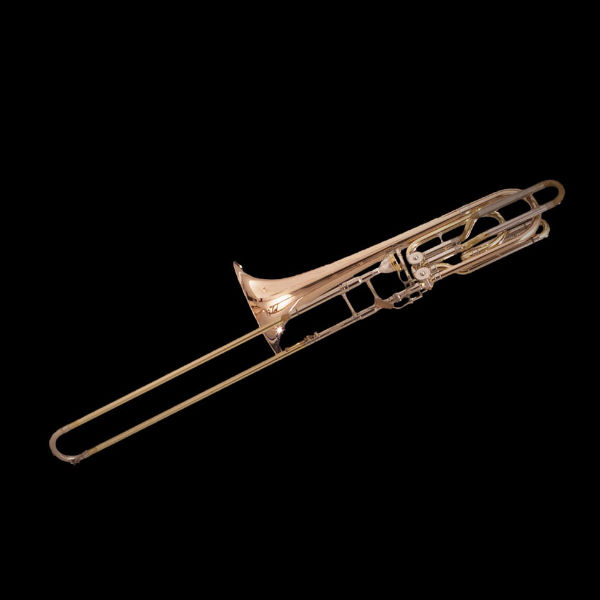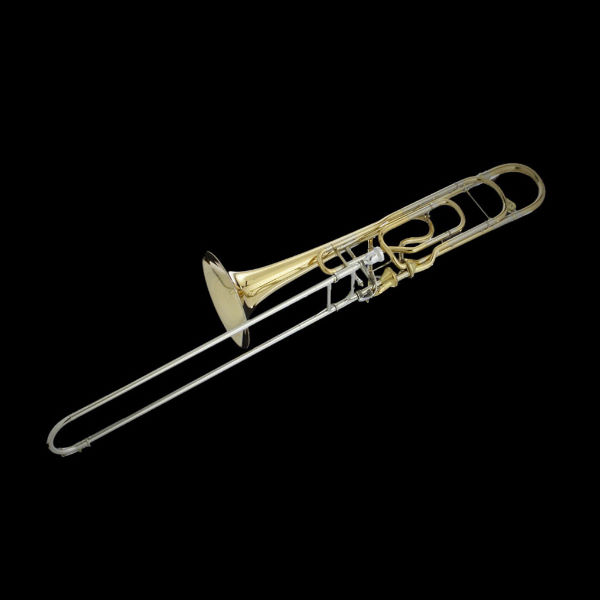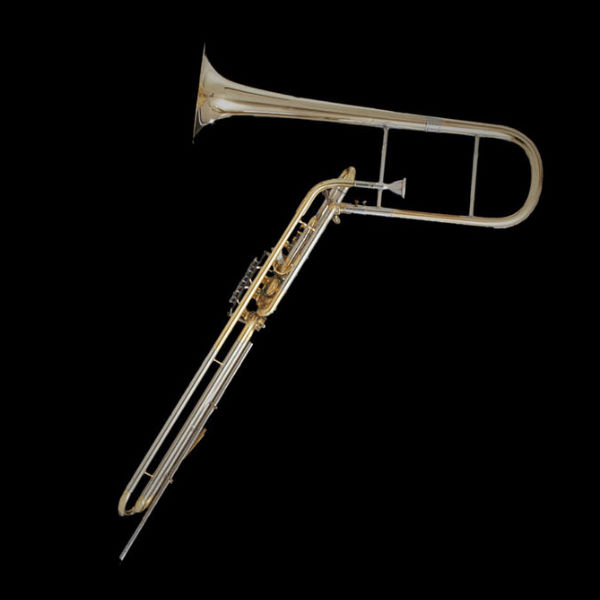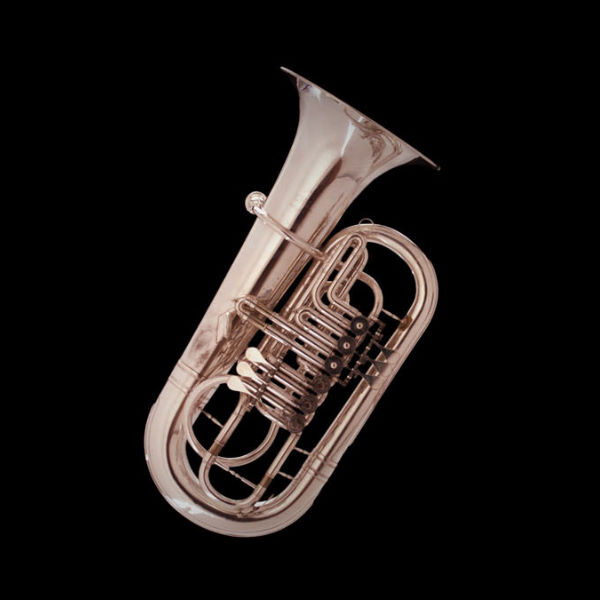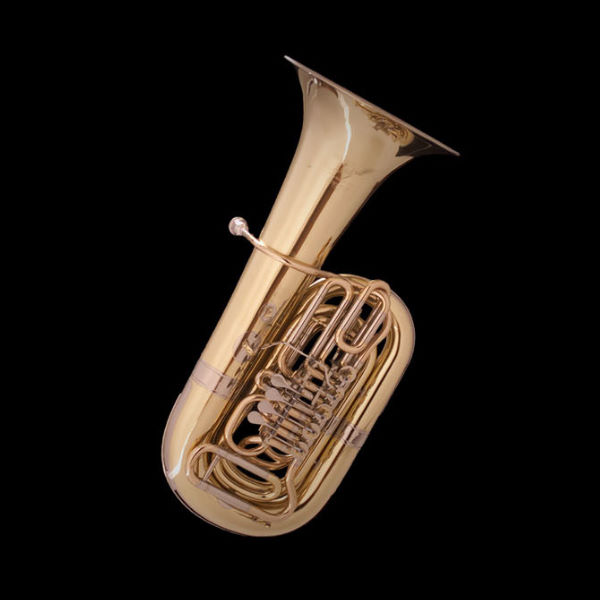Brass
Trumpets
Horns
Trombones
Tubas
Range of brass instruments

Early history
Early Cultures
Modern brass instruments are classed either as horns or trumpets, depending on the form of their tubing: horn tubes are mainly conical, trumpet tubes cylindrical. This distinction was first made about 300 years ago, when the first modern orchestra instruments were developed.
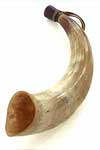
Cow horn
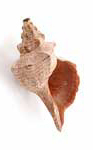
Sea snail trumpet
Prior to this, no such distinction was made. In early civilizations it was possible for the same instrument to have a cylindrical tube or a conical one or a mixture of both. The tube form was of no relevance and was determined solely by the material.
Wind instruments existed in the very oldest cultures in New Guinea, Brazil and Australia. They were made of the most conveniently available material. This was often an animal horn, but tusks, sea snails and mollusks, hollowed-out branches, bark, bamboo, reeds and even fruits (e.g. pumpkins) were also made into simple instruments for use in religious and magical rites or for signaling purposes.
The Australian didgeridoo is an example of one of the very first trumpets: a wind instrument with a cylindrical tube.
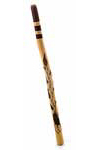
Didgeridoo
The didgeridoo is a long, hollow wooden tube with a mouthpiece formed out of beeswax. It is still used by the Aborigines today as a kind of megaphone, increasing the volume of a ritual song or chant. The embouchure is similar to the trumpet’s, and a special breathing technique called circular breathing is used to produce a mysterious-sounding continual drone.
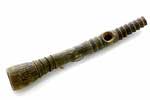
Kakaki
Animal horns were blown either at the end, where the tip had been chopped off, or through a hole bored in the side. [Foto: Kakaki] On the very earliest instruments only a single note could be produced, but gradually more notes became available as finger-holes were added or mouthpieces fashioned either by shaping the horn’s aperture itself or by making a separate mouthpiece and fitting it onto the tube.
In addition, a wider range of materials was introduced; trumpets made in 500 A.D. show that instruments were also being made of clay and precious metals.
Antiquity
Ancient civilizations such as the Egyptians, Indians, Chinese, Hebrews, Greeks and Romans were already making metal wind instruments with cup mouthpieces and bells. The instruments were used for signaling, military and religious purposes.
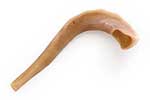
Shofar
Among the most ancient types of metal wind instrument known today are the Egyptian snb, the sound of which was likened to the braying of a donkey by the Greek writer Plutarch; the Israeli trumpets hasoserah and chazozra, which only priests were allowed to play, and the shofar, which was made of a ram’s horn; the Greek salpinx was a bronze instrument with a 1.5 m long, narrow-bored cylindrical tube and a short, conical bell; and the Etruscans had bronze instruments with detachable bells.
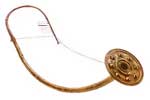
Lure
The Etruscan tuba was later adopted by the Romans, as was the lituus, which had an animal horn fitted onto its bronze tube as a bell. Both the tuba and the lituus reportedly sounded harsh and terrifying. Another of the Romans’ brass instruments was the curved cornu. Other instruments known to have existed are the Germanic, S-shaped lur from the Bronze Age and the Celtic karnyx, which had a bell in the shape of a dragon’s head. In China there were the long metal trumpets hao t’ung and la pa.
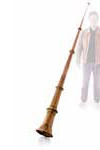
Dung
The dung is an almost five meter long giant trumpet from Tibet with a broad and shallow mouthpiece. It is played by Buddhist monks using the same circular breathing technique as on the didgeridoo. This technique makes particularly long notes possible.
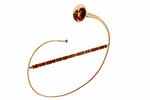
Bucina
It was the development of the Roman instruments which was of greatest significance for the brass wind instruments used in today’s orchestras. The Romans had acquired such skill in instrument-making that the shape and performance of some Roman horns do not differ greatly from later natural horns. The Romans were already familiar with the technique of overblowing and were therefore able to produce a number of naturals on their instruments. The tubing was often over three meters long and could either be straight, as on the Roman tuba, or wound, as on the bucina.
However, the art of instrument-making was lost in Europe during the migration of the peoples (in around 800 A.D.) and had to be rediscovered in the Middle Ages.
The Middle Ages
The direct ancestor of all modern brass wind instruments is the buisine, a medieval fanfare trumpet which emerged in southern Italy in the 11th century. The name is derived from the Latin term bucina. However, the Roman bucina had a curved tube, whereas the tube of the medieval buisine was long and straight, flaring immediately before the bell. The relatively narrow bore and the thin metal tube meant that higher partials were also playable on the instrument, which had a cup mouthpiece. It was thus predestined to undergo further development.
Two instrument types evolved from the buisine, both of which featured a cup mouthpiece.
The first type was a brass instrument with a narrow, straight and cylindrical tube on which a widely flaring, shallow bell was mounted. It was from this instrument that trumpets and trombones were to evolve.
The second type had a tube which tapered only slowly before ending in a deep bell. In addition, the tube was curved after the fashion of an animal horn and even coiled on instruments with longer tubes. This was the forerunner of French horns and bugles.
Acoustics
Acustics of brass instruments
On all brass instruments, sound is produced according to the principle of lip-vibrated instruments. The vibrating lips of the musician against a mouthpiece serve as the generator, causing a resonator, in this case a column of air surrounded by a tube, to vibrate.
Pitch
Pitch depends on the length of the vibrating air column.
- If the tube of a wind instrument cannot be lengthened by valves or slides, or shortened by keys, only one fundamental can be produced. The only available pitches are therefore a series of naturals. The notes in this series can be sounded individually by overblowing. It is this technique of pitch alteration that is used to play notes on the natural horn and the natural trumpet. Valveless French horns are also counted as natural horns.
- If the tube of a wind instrument can be lengthened during playing by valves or slides or shortened by keys, the corresponding number of fundamentals can be played. Several series of naturals are therefore available. The chromatic scale can be played by combining the various series of naturals with overblowing to the individual overtones.
Timbre
The following features and their relationship to each other determine the playing technique and timbre of the instruments: type of mouthpiece, bore, length, tube thickness, bell taper, material.
Mouthpieces
Cup and funnel-shaped mouthpieces come in a great many shapes and sizes. The basic rule is that the sharpness of angle of the inner rim corresponds to the brightness of the sound:
Note
The shallower the cup, the brighter and sharper the sound and the smaller the volume. The deeper the cup, the greater the volume and the mellower and rounder the sound.
Trumpets have the shallowest mouthpiece with a sharp-angled rim (depth about 10 mm) which yields a brilliant, sharp and bright sound.
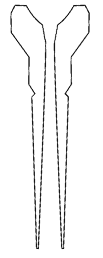
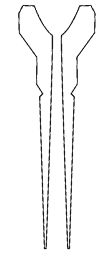
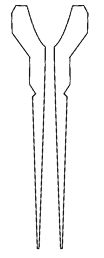
Trombones use larger cup mouthpieces which allow the lips greater vibrations. Only in this way can low frequencies be sounded.
Horns are played with a deep funnel mouthpiece which makes very mellow sounds possible. The diameter is the same as that of a trumpet mouthpiece, which means that notes can still be played powerfully in the lower register.
The deeper cup mouthpieces used on low flugelhorns and tubas produce a mellow sound and have an easier embouchure than the funnel mouthpiece. The high naturals are less easily played than with a shallower cup mouthpiece.
Tubes
Cylindrical tubes exhibit the following acoustic properties:
Note
- The longer the tubes the lower the pitch and the higher the number of partials that can be played.
- The wider the tubes are in relation to length the easier it is to play the pedals and the harder it is to sound higher frequencies. They contain only the deepest partials, yielding a dark sound.
- Narrow tubes produce a large number of high partials.
Cylindrical tubes which are open at both ends produce partials as natural oscillations which bear the ratio of whole numbers.
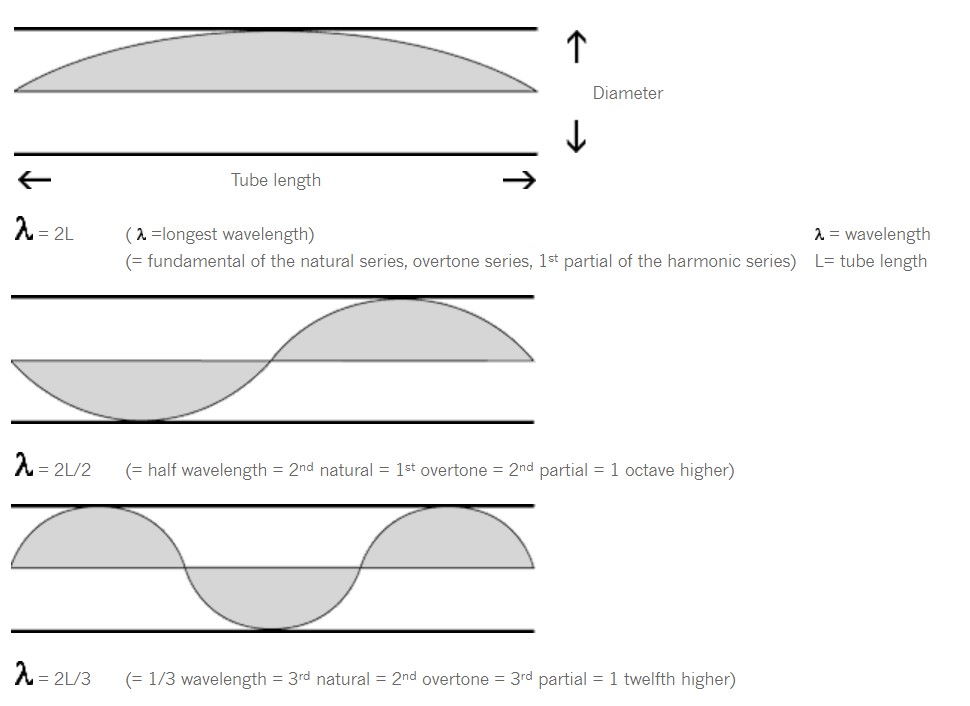
On the other hand, cylindrical tubes which are closed at one end only produce the odd partials (1:3:5:7 …, stopped organ pipe). Compared with a tube open at both ends the fundamental vibration is twice as long, which means that it sounds an octave deeper.

In reality, the acoustic properties of the trumpet and the trombone - and those of many other wind instruments - correspond only in theory with those of cylindrical tubes closed at one end in which only odd partials should be playable. The reason for this is that while trumpets and trombones are constructed mainly as cylindrical tubes, they are not constructed entirely as such. By experimenting over the centuries, instrument makers finally succeeded in making every partial, including the even ones, available by subtly modifying the cylindrical tube and the bell. But this does not mean that the musician’s lips have no part to play. The tube form influences the way the tone is created and consequently also the timbre. Cylindrical tubes which are closed at one end and contain only the odd partials as natural oscillations - 3, 5, 7 etc. times the fundamental frequency - have a different tone quality. On an instrument like the clarinet only the odd partials are available, unlike brass instruments, and it is only these which can be played by overblowing.
Conical tubes exhibit the following acoustic properties:
Note
The flaring conical tube cannot support the higher partials, so these are missing from about the 6th partial upward, resulting in a mellow and dark tone with no metallic properties. The tones are easily produced, and become very broad when played forte.
The natural frequencies of conical tubes which are closed at the top mean that odd and even partials are available in the same measure. The French horn and all the members of the tuba family such as the flugelhorn, tenor horn, euphonium (baritone) and tenor tuba (Wagner tuba) are conical instruments. Because of their good projection conical instruments, which evolved from the hunting horn, are especially well suited for playing outdoors. Together with the bass drum it is the baritone that is the first instrument audible in an approaching brass band.

*left: cylindrical tube; right: conical tube*
Bells
The acoustic properties of the variously shaped bells are as follows:
Note
The wider the bell the better longer wavelengths (deeper notes) are projected. If the bell tapers too quickly (fast rate of flare) deep notes project poorly.
The bell thus suppresses certain partials, which makes its role in the intensification of tone an ambivalent one: if it is too wide it suppresses the higher partials, thus tempering the brilliance of the tone; if it is too narrow the deep frequencies project poorly.
The bell of a bass instrument must therefore be relatively wide and the rate of flare must not be too fast.
The bell’s second task is to guide the frequencies in a definite direction as they are emitted:
Note
High-frequency partials are emitted along the instrument’s longitudinal axis, whereas deeper frequency partials have a less definite direction.
Therefore: a brass instrument sounds clearer from the front than from the side.
Mutes
The main function of mutes is less to reduce the volume of sound than to produce different timbres.
Note
How mutes can affect the tone:
- Strengthen the odd partials, which are dissonant from the 7th partial.
- Reduce the volume in the lower register.
- Sharpen the sound and raise the pitch ever so slightly in the low register.
- Increase the accuracy of projection in the middle and upper registers.
- By muting partials and strengthening others the timbre is altered. See also resonance, formant.
There are a great many mutes of various different forms, and the timbres they can produce vary enormously.
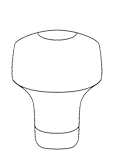

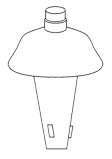
| Instrument | Tube length | Bore | Bore size | Bell | |
| cylindrical | conical | ||||
| Bb piccolo trumpet | 65–72 cm | X | narrow | medium | |
| Trumpet in C, Bb | 114–130 cm | X | narrow | medium | |
| Natural trumpet in D | 180 cm | X | narrow | medium | |
| Tenor tuba Bb, F (Wagner tuba) |
240 cm | X | narrow | medium–wide | |
| Bass trumpet | 257cm | X | narrow | medium | |
| Euphonium | 262 cm | X | wide | wide | |
| Tenor trombone | 270 cm | X | narrow | medium | |
| Bass trombone | 270–290 cm | X | narrow | medium | |
| Cimbasso | 340 cm | X | narrow | wide | |
| Tuba in F | 350–400 cm | X | very wide | very wide | |
| French horn in F | 370 cm | X | narrow | medium–wide | |
| Contrabass trombone | 370 cm | X | narrow | wide | |
| Contrabass tuba | 540 cm | X | very wide | very wide | |
